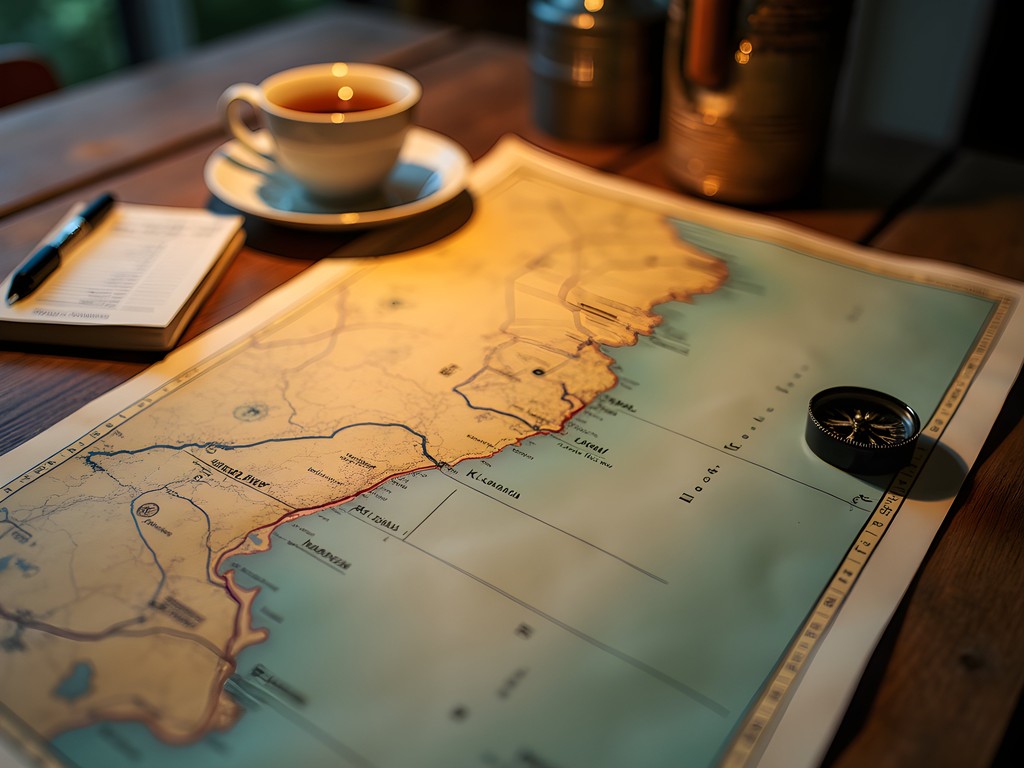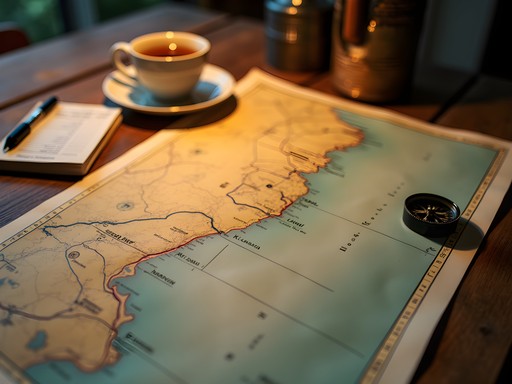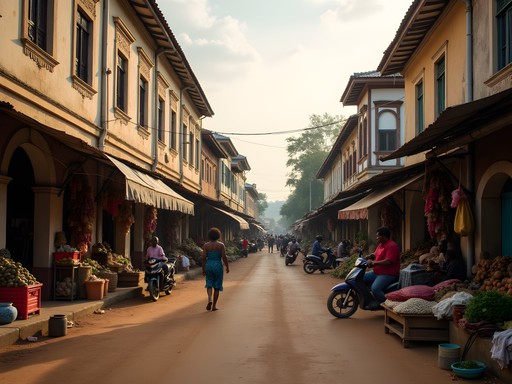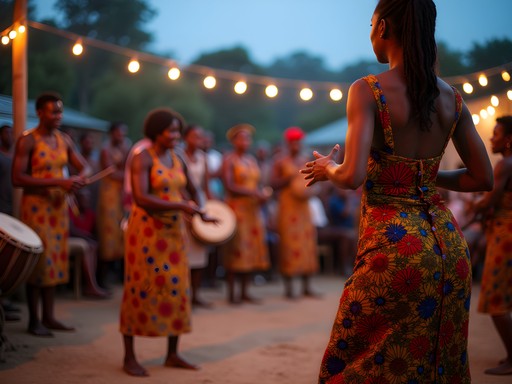Disclosure: This article contains affiliate links. We may earn a commission from purchases at no extra cost to you, which helps our travel content.
At 64, I've traversed six continents and navigated financial markets through multiple recessions, yet nothing quite prepared me for the profound complexity of traveling the Congo River to Kisangani. This journey isn't merely geographic—it's a passage through layers of history, resilience, and natural wonder that defies the conventional travel experience. Having recently completed my third expedition to this remarkable region, I'm compelled to share both its challenges and its incomparable rewards with those bold enough to venture beyond the well-trodden path.
Preparing for the Congo: A Financial Analyst's Approach to Adventure
My career as a CFO taught me that thorough preparation mitigates risk—a principle that applies doubly when planning a Kisangani expedition. Begin preparations at least four months in advance, securing visas through official channels (expect bureaucratic delays) and obtaining the mandatory yellow fever vaccination certificate.
I've found that budgeting approximately $3,500-4,500 per person for a two-week journey strikes the balance between comfort and authentic experience. This includes river transport, mid-range accommodations, guides, and contingency funds—the latter being non-negotiable in a region where banking infrastructure remains limited.
For medical preparation, consult with a travel physician about malaria prophylaxis, and assemble a comprehensive medical kit. My kit always includes a water purification system, which has proven invaluable during riverside camping and in remote villages where water quality is uncertain. Additionally, a reliable satellite communicator provides essential connectivity in areas where cellular networks are nonexistent—an investment that offers both practical utility and peace of mind.

💡 Pro Tips
- Secure visas at least 8 weeks before departure and expect delays
- Carry sufficient USD in small denominations ($1, $5, $10 bills) as ATMs are scarce and often unreliable
- Register with your embassy before departure and provide them with your itinerary
The River Journey: Logistics and Cultural Immersion
The Congo River isn't merely a waterway; it's the pulsing lifeline of Central Africa and your primary thoroughfare to Kisangani. After decades of evaluating investment risks, I can confidently say that selecting the right vessel is your most crucial decision. Options range from larger commercial boats (slower but more stable) to smaller, faster pirogues (traditional canoes).
For my journey, I chose a mid-sized riverboat with a local operator recommended by contacts at the Congolese Cultural Center in Kinshasa. This balanced approach cost approximately $800 for a seven-day upriver journey, including basic meals. While certainly not luxurious, it provided an authentic experience and opportunities for meaningful cultural exchange with fellow passengers.
The journey itself unfolds like a living documentary—riverside villages appear where women wash colorful fabrics while children practice traditional fishing techniques their ancestors used for generations. Each evening, our boat would dock at small communities, where I'd often exchange stories with elders and witness impromptu music performances that rivaled any professional show I've seen in Montreal or Prague.
To document these fleeting moments, I relied on my waterproof notebook for journaling and sketching. When conversing with locals, my pocket translator bridged linguistic gaps, allowing for deeper connections than would otherwise be possible.

💡 Pro Tips
- Book river transportation through established operators with safety records—I recommend Congo River Expeditions
- Pack light but smart—space is limited on all vessels
- Bring small gifts (school supplies, fishing hooks) for villages, but distribute through local leaders to respect community protocols
Kisangani: Where Colonial History Meets Vibrant Present
Arriving in Kisangani after days on the river feels like discovering a living museum of architectural contrasts. The city, formerly Stanleyville during Belgian colonial rule, bears witness to multiple historical chapters—from elegant but decaying Art Deco buildings to Soviet-influenced structures from the Mobutu era.
I recommend securing accommodations near the central market area, where several mid-range hotels offer reliable electricity and security. During my stay, Hotel Riviera ($85/night) provided comfortable rooms with generator backup—a significant consideration in a city where power outages remain common.
For those interested in colonial history, the old Belgian administrative buildings warrant exploration, though always with a local guide who can provide cultural context and navigate occasional security checkpoints. The Wagenia Falls, where local fishermen maintain traditional fishing practices using wooden scaffolding, offers a fascinating glimpse into techniques passed through generations.
During my exploration of these falls, my quick-dry microfiber towel proved invaluable after an unexpected rain shower, while my insect repellent clothing provided essential protection in an area where mosquitoes are particularly aggressive at dusk.
The central market deserves at least half a day, where the intricate woodcarvings reminded me of my mother's art collection in Guadalajara. I was particularly drawn to the calabash artisans whose geometric patterns echo traditional Japanese designs I studied during visits to Kyoto.

💡 Pro Tips
- Hire a recommended local guide through your hotel for city exploration—Joseph at Hotel Riviera has exceptional historical knowledge
- Visit the Wagenia Falls in early morning when fishing activities are most active
- Purchase local art directly from artisans at the central market, but be prepared to negotiate respectfully
Cultural Connections: Art, Performance, and Community
My lifelong passion for street performance and traditional arts found unexpected fulfillment in Kisangani. On my second evening, I was invited to witness a rehearsal of the Boyoma Cultural Troupe, where dancers incorporated elements of both traditional Congolese movement and contemporary expressions reflecting urban experiences.
For those seeking similar cultural immersion, connections must be made through trusted local intermediaries. My guide, François (available through the cultural desk at Hotel Riviera), arranged visits to artist workshops and community performances that wouldn't appear in any guidebook.
The Académie des Beaux-Arts de Kisangani, though operating with limited resources, hosts student exhibitions that showcase remarkable talent. During my visit, I participated in an impromptu calligraphy exchange, sharing Japanese techniques I learned in Kyoto while students demonstrated traditional Congolese symbolic writing systems.
To document these cultural exchanges, I relied on my field recording device to capture the intricate rhythms and oral histories shared by community elders. These recordings have become treasured souvenirs that convey the essence of Kisangani far better than any photograph.
In preparation for such cultural exchanges, I recommend bringing a portable art kit as both a personal creative outlet and a means of connection across language barriers. My simple watercolor sketches of Kisangani street scenes became unexpected conversation starters and, in several cases, cherished gifts for local families who hosted me.

💡 Pro Tips
- Learn basic Lingala greetings—even minimal effort is deeply appreciated and opens many doors
- Attend Sunday church services for extraordinary gospel music, even if you're not religious
- Request permission before photographing people or cultural ceremonies—offering printed photos as gifts creates goodwill
Safety, Sustainability, and Responsible Travel
My financial background compels me to address risk management frankly: Kisangani requires vigilant awareness without paranoia. The region's political stability has improved, but situations can evolve rapidly. I maintain relationships with local contacts who provide real-time security updates and arrange trustworthy transportation.
Environmental considerations are equally crucial. The Congo Basin contains the world's second-largest rainforest, yet faces significant threats. As visitors, our choices matter. I selected river operators with demonstrated environmental practices and accommodations that source food locally rather than importing packaged goods.
For water excursions beyond the main river, I relied on a dry bag set to protect documents and electronics while reducing plastic waste. When visiting more remote communities, my solar lantern provided lighting without burdening local resources and became a useful gift for my host family upon departure.
Responsible travel also means appropriate compensation for services and knowledge. I budgeted specifically for fair payment to guides, cultural demonstrators, and artisans—recognizing that proper compensation sustains both livelihoods and traditions. The financial analyst in me sees this not as charity but as a sound investment in cultural preservation and sustainable tourism development.

💡 Pro Tips
- Register with your embassy upon arrival in Kinshasa and maintain contact throughout your journey
- Purchase carbon offsets for your flights—the Congo Basin is a critical carbon sink deserving protection
- Support community-based tourism initiatives like the Boyoma Ecotourism Cooperative rather than foreign-owned operations
Final Thoughts
As I reflect on my Kisangani journeys from the comfort of my Omaha home, surrounded by artifacts and journals from decades of travel, I'm struck by how this particular destination continues to challenge and transform my understanding of adventure. The Congo River and Kisangani offer no sanitized tourism experience—they demand engagement with complex realities, historical legacies, and environmental challenges.
Yet therein lies their profound value. In an increasingly homogenized world, Kisangani remains stubbornly, beautifully authentic. The financial analyst in me calculates the return on investment not in currency but in perspective gained, in stories collected, in connections forged across cultural divides.
For those considering this journey, I offer this final observation: Kisangani will not accommodate your expectations—it will transcend them, challenge them, sometimes frustrate them. But if you approach with preparation, respect, and openness, it will reward you with experiences that cannot be quantified on any spreadsheet I ever managed. The river continues to flow, the dancers continue to move, the artists continue to create—waiting for those ready to move beyond tourism into true travel.
✨ Key Takeaways
- Thorough preparation is essential—this journey rewards the meticulous planner
- Cultural connections through art and performance offer the deepest understanding of Kisangani's spirit
- Responsible travel choices directly impact both community development and environmental protection
📋 Practical Information
Best Time to Visit
September-November (dry season with moderate temperatures)
Budget Estimate
$3,500-4,500 per person for 2 weeks (mid-range)
Recommended Duration
Minimum 12 days (7 for river journey, 5 for Kisangani)
Difficulty Level
Challenging
















Comments
coffeeexplorer
Oliver, as someone who's done similar journeys through remote parts of Southeast Asia, I really appreciate your practical approach to this post. The Congo River has been on my bucket list for years! Your section on negotiating transportation reminded me of my experiences on the Mekong. Question - how did you handle the language barriers? I speak decent French but I imagine the local dialects add another layer of complexity. Also, that colonial history/modern vibrancy contrast you described in Kisangani seems fascinating. Did you find any particularly good local guides who could provide deeper context?
Gregory Boyd
Oliver, your analytical approach to this journey resonates with my own travel philosophy. Having done the Congo River route twice now, I appreciate how you balanced the logistical challenges with cultural immersion. The section on Kisangani's colonial history was particularly nuanced - something many travelers overlook. For anyone following Oliver's footsteps, I'd add that the seasonal flooding patterns dramatically affect both river travel conditions and local cultural activities. October-November offered me the most balanced experience. Also worth mentioning that proper documentation is absolutely critical - I keep copies in three different formats and locations while traveling there.
Oliver Takahashi
Excellent point about seasonality, Gregory. I should have emphasized that more. Your documentation strategy is smarter than mine was - wish I'd thought of triple backups before my permit was nearly ruined in that sudden downpour!
vacationlover
Those river photos are incredible! What camera did you use?
hikingblogger
If you look in his bio, he mentions using a weatherproof Olympus. Smart choice for the humidity there!
Amit Sullivan
Oliver, your section on 'Cultural Connections' resonated deeply with me. During my time in Kisangani last year, I was fortunate to witness a traditional dance performance that still gives me goosebumps thinking about it. The rhythms, the community spirit! I found that bringing small prints of photos I'd taken elsewhere in Africa as gifts opened many doors. The colonial history section was particularly well-researched - those layers of complexity are what make travel in the Congo so intellectually stimulating. Did you visit the markets near the river confluence? The artisans there were creating masterpieces with limited resources.
summerpro
Those market descriptions made me feel like I was there! Great writing.
hikingblogger
Going to Kisangani next month! Any advice on what medical supplies to bring that aren't mentioned in your post? Your financial analyst's approach to planning is brilliant btw!
coffeeexplorer
Not the author but I was there in September. Bring twice the antimalarials you think you need, rehydration salts, and a good medical kit. I used my first aid kit daily for small issues. Also, water purification tablets were essential!
wildway
How many days would you recommend for the river portion? Planning my itinerary now!
Oliver Takahashi
I'd allow at least 5-7 days for the river journey itself, plus 3-4 days in Kisangani. Build in buffer days - schedules are more suggestion than certainty on the Congo!
globewalker
Wow Oliver, this is seriously inspiring! At 37, I've barely scratched the surface of Africa, and the Congo has always seemed intimidating. Your detailed breakdown of the river journey logistics is exactly what I needed. How safe did you feel overall? The photos of those sunset river scenes are absolutely stunning.
Amit Sullivan
Not Oliver, but I did a similar journey last year. Safety is all about preparation and local connections. Having a trusted fixer in Kisangani made all the difference for me. The Congolese people were incredibly welcoming.
globewalker
Thanks Amit! Did you arrange your fixer beforehand or find someone when you arrived?
Amit Sullivan
I arranged everything through a local tour company about 2 months before arrival. Worth every penny for the peace of mind, especially for first-timers to DRC.
cityblogger
How did you handle the language barrier? I speak decent French but wondering if that's enough for this region or if I should learn some local phrases too?
Gregory Boyd
Not Oliver, but I traveled through DRC last year. French will get you far in Kisangani with officials and in hotels, but learning basic Lingala or Swahili phrases opens so many doors with locals. The effort is genuinely appreciated and transforms the experience.
cityblogger
Thanks Gregory! Will definitely download some language basics before going.
Sage Dixon
Oliver, your piece transported me back to my own Congo River journey three years ago. The way you captured the rhythm of river life - the morning mists, the calls of traders between boats, the unexpected moments of connection despite language barriers - it's all so visceral. I still remember meeting a family who had been traveling for 9 days to reach Kisangani, carrying everything they owned. The resilience of the Congolese people is extraordinary. Did you visit the Wagenia Falls fishermen? Their traditional fishing methods using wooden scaffolding have remained unchanged for centuries - watching them work against the rushing water was one of the most humbling experiences of my travels. Your section on preparing financially for unexpected delays was particularly valuable advice that most travel guides miss.
Venture X
Premium card with 2X miles, $300 travel credit, Priority Pass